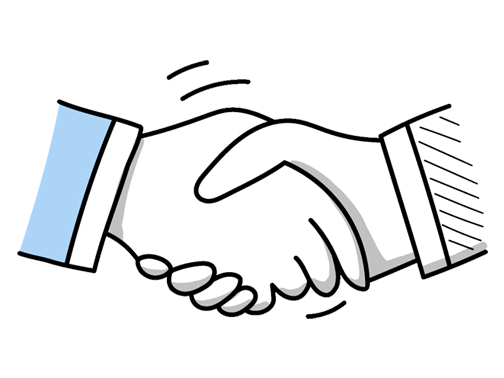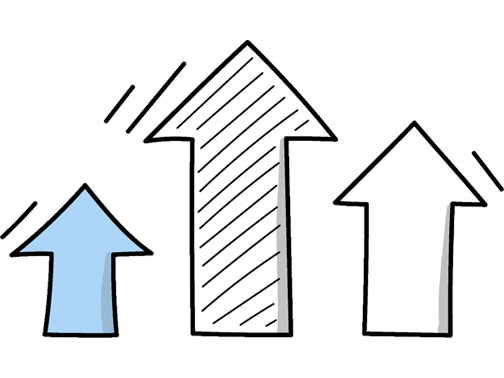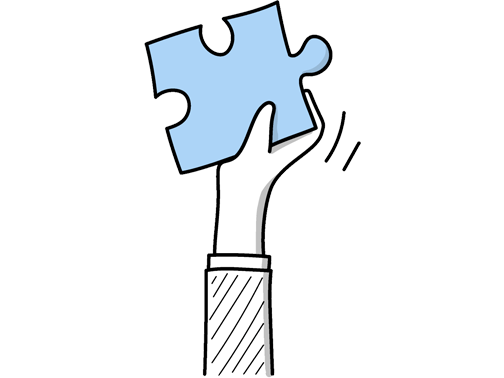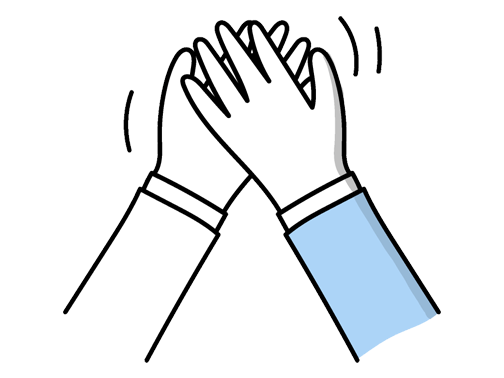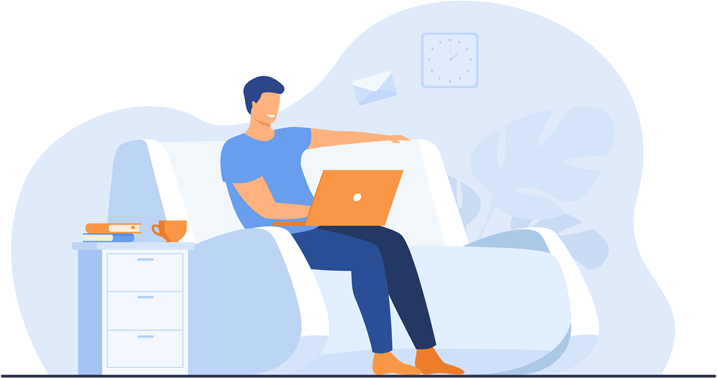Textile Designer Interview Questions (2025 Guide)
Find out common Textile Designer questions, how to answer, and tips for your next job interview
Practice Interviews Online - Identify your strengths and weakness in a realistic Textile Designer mock interview, under 10 minutes
Practice Now »Textile Designer Interview Questions
Questions like this help interviewers assess your ability to collaborate and contribute effectively within a team. You need to briefly describe the project, highlight your specific responsibilities, and explain how your role contributed to the team's success.
Example: In a recent project, our team designed a seasonal fabric collection aimed at blending traditional patterns with modern trends. I took charge of developing the initial sketches and collaborated closely with the production team to ensure the designs were feasible and aligned with market demands. Seeing the collection well received in stores was rewarding, especially knowing it was a true team effort from concept to final product.
Interviewers ask this question to see how well you work with others and handle challenges in a team setting. You need to explain how you communicated your ideas clearly, resolved any conflicts by finding compromises, and contributed to finishing the project successfully and on time.
Example: In a recent project, I worked closely with both graphic designers and production teams to develop a new fabric pattern. We had differing opinions on colour palettes, so I facilitated open discussions to find common ground. By listening carefully and adjusting my designs, we ensured everyone’s ideas were valued, resulting in a final product that was both innovative and practical for manufacturing. It was rewarding to see how collaboration enriched the outcome.
Questions like this assess your awareness of current industry challenges and your commitment to responsible design. You need to explain why sustainability matters in reducing environmental impact and describe specific eco-friendly materials or processes you use in your projects.
Example: Sustainability in textile design is essential, especially today. I focus on choosing eco-friendly materials and techniques that reduce waste, like natural dyes and zero-waste pattern cutting. For example, in a recent project, I worked with organic cotton and repurposed fabric scraps, creating beautiful, meaningful pieces without compromising quality or style. It’s about balancing creativity with responsibility to protect resources for future generations.
This interview question aims to assess your creativity and technical skills in enhancing fabric aesthetics and texture. You need to explain the specific methods you use, such as pleating, embossing, or dyeing, and how they contribute to your design vision.
Example: I enjoy experimenting with techniques like pleating, smocking, and embroidery to add texture and dimension to fabrics. For surface design, I often use hand-painting and block printing to create unique patterns that feel authentic and tactile. Combining traditional methods with digital tools also allows me to explore fresh ideas while respecting craftsmanship. It’s about finding that balance between innovation and the fabric’s natural qualities.
Questions like this help interviewers understand your creative process and how you bring fresh ideas to your work. You need to explain where you get your inspiration, such as nature or culture, and briefly describe how you turn those ideas into unique, practical designs by outlining your design steps.
Example: When developing new textile designs, I often draw inspiration from everyday life—nature’s patterns, urban textures, or cultural stories. I like to explore these elements, sketch ideas, and experiment with materials to bring fresh perspectives. This process helps me create textiles that aren’t just visually interesting but also practical, ensuring each piece has its own character and purpose. For example, I once used leaf veins as a motif that translated beautifully onto sustainable fabrics.
Questions like this assess your ability to collaborate and communicate effectively to meet shared goals. You need to explain that you actively listen to client or team needs, seek feedback regularly, and adjust your designs to align with their vision and project objectives.
Example: I start by having open conversations to understand what the team or client really wants, including their priorities and inspirations. During the process, I share sketches and samples to get feedback early, which helps keep everything on track. For example, when working on a recent collection, regular check-ins helped me adjust the designs to better match their vision and avoid surprises later on.
This interview question aims to assess your attention to detail and understanding of the translation process from digital to physical, ensuring your designs maintain their integrity. You need to explain your methods for verifying color accuracy, fabric compatibility, and prototype testing to maintain design fidelity.
Example: When moving designs from screen to fabric, I rely on close collaboration with the production team and use test swatches to check colours and details. I also pay attention to the fabric’s texture and how it might affect the print. For example, with a recent floral pattern, adjusting the scale after a sample helped the design stay true to my vision once woven. It’s about staying hands-on throughout the process.
This interview question helps the employer understand your technical skills and how you use design software to create and enhance textile patterns. You need to clearly state which programs you know, your level of expertise, and give examples of how you apply these tools to solve design problems or streamline your work.
Example: I have strong experience using Adobe Illustrator and Photoshop for creating detailed textile patterns and experimenting with colourways. I use CAD programs to translate designs accurately for production, which helps streamline the workflow and reduce errors. In a recent project, collaborating through shared files allowed the team to iterate quickly and deliver within tight deadlines, showing how these tools enhance both creativity and efficiency in textile design.
Questions like this assess your ability to work well with others and contribute to a creative team environment. You need to explain that you actively listen, provide clear updates, and encourage open feedback to ensure everyone stays aligned and inspired.
Example: I find that being approachable and open really sets the tone for good teamwork. I make a point of listening carefully and checking in often, whether it’s quick chats or sharing sketches early on. For example, in my last project, regular updates helped us catch design tweaks before they became issues, keeping everyone on the same page and the process smooth.
Questions like this assess your organizational skills and ability to prioritize under pressure, which are crucial in managing diverse textile design projects. You need to explain that you create clear schedules, set realistic deadlines, and communicate regularly to ensure timely completion without compromising quality.
Example: I prioritize by breaking projects into smaller tasks and setting clear timelines, which helps me stay organized and focused. For example, when juggling fabric designs and client revisions, I use a calendar to balance deadlines without compromising creativity. Keeping communication open with stakeholders also ensures everyone is aligned, allowing me to adapt smoothly if priorities shift. This approach keeps my workload manageable and quality consistent.
Hiring managers ask this question to see if you are proactive in keeping up with industry trends and continuously improving your skills. You should say that you regularly read industry publications, engage with suppliers and experts, and apply new materials or technologies in your designs to stay current and innovative.
Example: I make it a point to regularly read industry journals and attend trade shows, which helps me stay updated on innovative fabrics and techniques. Connecting with fellow designers and suppliers also provides fresh insights. When I learn about a new material or technology, I experiment with it in my projects, which often leads to more creative and practical designs. This ongoing process keeps my work both relevant and inspired.
Employers ask this question to see how you identify opportunities to improve designs and how you take initiative to implement innovative solutions. You need to explain the challenge you noticed, the steps you took to research and apply a new technique or material, and the resulting benefits to the project’s quality or functionality.
Example: In a recent project, I noticed that traditional dyes weren’t capturing the vibrancy we wanted. So, I researched natural pigments and introduced plant-based dyes, which gave richer, more sustainable colours. It took some trial and error to adapt the process, but the results enhanced the fabric’s texture and appeal. The client appreciated the eco-friendly approach, and it became a key selling point for their new collection.
Employers ask this question to see how you blend your artistic skills with real-world usability, ensuring your designs are not only beautiful but also functional. You need to explain how you solve problems by adapting your creative ideas to meet practical needs and collaborate with others to achieve balanced, effective designs.
Example: Balancing creativity with functionality is about understanding the end user while exploring fresh ideas. I start by identifying the purpose and constraints of a design, then experiment with textures, patterns, or materials that add personality without compromising usability. For example, I once created a fabric that was visually striking yet durable enough for upholstery. Collaboration helps me refine these ideas, ensuring the final piece is both innovative and practical.
Questions like this assess your ability to balance creativity with market demands, showing you understand both artistic vision and business needs. You need to explain how you research trends and customer preferences while incorporating unique elements that set your designs apart but still appeal to buyers.
Example: I focus on blending creativity with what the market needs by keeping up with trends while staying true to my unique style. For example, when designing a recent collection, I researched consumer preferences and balanced bold patterns with wearable colour schemes. This way, the designs stand out but still appeal to a wide audience, making them both fresh and practical for production and sales.
Employers ask this to see your creativity and problem-solving skills in real situations. You need to describe a specific challenge, explain your unconventional solution, and highlight the positive outcome.
Example: In a past project, I needed to create a sustainable fabric that still felt luxurious. Instead of sticking to traditional materials, I experimented with blending recycled fibres and natural dyes, which was quite unconventional at the time. This not only met the brief but also added unique textures to the design. It was a rewarding challenge that pushed me to rethink what’s possible in textile design.
This interview question helps assess your knowledge of the textile industry's evolving landscape and how you stay inspired by new developments. You need to mention exciting trends like sustainable materials and eco-friendly practices, then explain how these shape your design process and creativity.
Example: One trend I find particularly inspiring is the move towards sustainable fabrics, like organic cotton and recycled polyester, which push designers to rethink textures and colours creatively. I also see a growing interest in digital printing techniques that allow for intricate, customizable patterns, meeting consumer demand for unique pieces. These developments shape how I approach design, blending innovation with consumer values to create textiles that feel both fresh and meaningful.
Questions like this assess your technical skills and creativity in color management. You need to clearly outline your step-by-step method for precise color matching, including tools and adjustments, then explain how you create balanced palettes using inspiration and design principles, while also addressing how you troubleshoot and revise when colors don't align as expected.
Example: When working on color matching, I start by understanding the fabric and lighting conditions, then use tools like Pantone guides to find the closest shades. Developing palettes involves balancing trends with the project’s mood, often combining contrasting and harmonious tones. If colors don’t hit the mark, I revisit samples and tweak shades collaboratively until everything feels right—like once adjusting a teal to better complement natural fibers, which really elevated the final design.
This question is designed to see if you understand the current issues in the textile industry and can think critically about them. You need to mention challenges like sustainability, fast fashion's impact, and supply chain disruptions, showing awareness and your perspective on how these affect design and production.
Example: One of the biggest challenges in textiles today is balancing innovation with sustainability. Consumers and brands increasingly demand eco-friendly materials and ethical production, which can be costly and complex to implement. At the same time, staying creative and competitive means constantly exploring new techniques and designs. For example, finding ways to incorporate recycled fibers without compromising quality is a real puzzle many designers are working to solve.
Hiring managers ask this question to see if you can balance creativity with practical client needs, ensuring your designs are both innovative and market-relevant. In your answer, explain how you research client briefs and trends to understand expectations, then use brainstorming and mood boards to develop original ideas, and highlight how you adapt your designs based on feedback.
Example: When I start a design, I focus on really understanding what the client or market wants—whether it's a specific theme or staying on trend. I like to explore fresh ideas by mixing unexpected textures or colours. Throughout the process, I stay open to feedback, adjusting details so the final piece feels both original and right for its audience. For example, I once combined traditional patterns with modern shapes after client input, which ended up being a hit.
Hiring managers ask this question to see how open you are to collaboration and improvement, which are essential in textile design. You need to explain that you actively seek feedback from clients, colleagues, and users, then analyze it to identify key trends before incorporating relevant changes into your design iterations.
Example: I like to get input from different people—colleagues, clients, even the production team—to get a full picture. I take time to consider which feedback will truly enhance the design’s function and style. For example, after a recent fabric collection, I adjusted the pattern scale based on printer feedback, making sure the final product looked just right while staying true to the original vision.
Interviewers ask this to understand your problem-solving skills and resilience in your creative process. You need to briefly explain the challenge, the specific steps you took to solve it, and the positive outcome you achieved.
Example: In a recent project, I was tasked with creating a textile collection inspired by urban landscapes but faced tight deadlines and limited materials. To tackle this, I focused on simplifying patterns and sourced alternative fabrics without compromising quality. Collaborating closely with suppliers and staying flexible allowed me to deliver a strong, cohesive range on time, turning constraints into creative opportunities.
Questions like this assess your teamwork and problem-solving skills under pressure. You need to explain that you listen carefully to understand all perspectives, stay calm and professional, and work with the team to find balanced solutions that benefit everyone.
Example: When conflicts arise, I listen carefully to everyone’s point of view to really understand where they're coming from. In one project, a difference in design direction caused tension, so I suggested a quick brainstorming session to blend ideas, which helped us move forward positively. Staying calm and open-minded helps me keep things professional, ensuring we find a solution that works for the whole team.
This question assesses your commitment to continuous learning and staying relevant in a rapidly evolving field. You should say that you regularly attend industry workshops or webinars, experiment with the latest design software, and actively engage with professional textile design communities.
Example: I keep up with new tools and trends by regularly reading industry blogs and attending webinars or trade shows when I can. I also follow key designers and tech innovators on social media to see what’s emerging. Experimenting with software updates and new materials in my own projects helps me stay hands-on. Being part of design forums and local groups means I’m always exchanging ideas and learning from others in the field.
Questions like this help interviewers understand how you approach creativity and problem-solving in your work. You need to explain how you start with research and inspiration, develop sketches or digital drafts, choose materials and colors carefully, and finally refine the design through prototyping and feedback until the final product is ready.
Example: Sure! I usually start by researching trends and gathering inspiration, whether from nature, culture, or art. Then I sketch ideas, refining patterns and colours as I go. Once a concept feels right, I create samples to test textures and durability. Collaborating with production helps ensure the design translates well into the finished textile. For example, a recent floral print evolved after fabric trials revealed new ways to enhance the depth and feel.
This interview question helps the interviewer understand how you stay informed and ensure your designs meet market needs. You need to explain that you research trends by reviewing forecasts, attending trade shows, and analyzing industry reports, then use these insights to shape your design choices, like adjusting colors or patterns.
Example: Before starting a new project, I dive into industry reports, social media insights, and fashion blogs to spot emerging patterns. I also visit trade shows and collaborate with suppliers to understand client needs. This mix of research helps me create designs that feel fresh yet market-ready. For example, noticing a rise in sustainable fabrics last season led me to focus on eco-friendly materials for my recent collection.
Ace your next Textile Designer interview with even more questions and answers
Common Interview Questions To Expect
The interviewer is looking for a brief overview of your background, experience, and skills relevant to the position. Focus on your career achievements and goals.
Example: Sure! I have a background in textile design with a focus on creating unique patterns and prints. I have experience working with different materials and techniques to bring my designs to life. My goal is to continue pushing the boundaries of traditional textile design and create innovative and eye-catching pieces.
The interviewer is looking for you to highlight your key skills, qualities, and experiences that make you a strong candidate for the position. Be specific and provide examples to support your strengths.
Example: I would say my biggest strengths are my creativity, attention to detail, and ability to work well under pressure. For example, in my previous role, I was able to design a collection of textiles that received great feedback from clients due to my unique and innovative designs. I also have a strong eye for color and pattern, which has helped me create visually appealing and marketable products.
The interviewer is looking for examples of problem-solving skills, conflict resolution abilities, and how you handle challenges in the workplace. Be honest and provide specific details about the situation, your actions, and the outcome.
Example: Sure! One challenge I faced at work was when a client requested last-minute changes to a design I had already completed. I stayed calm, communicated with the client to understand their needs, and worked quickly to make the revisions. In the end, the client was happy with the final result and appreciated my flexibility and quick response.
Candidates can answer by stating a specific salary range, mentioning their flexibility, or asking about the company's budget. Interviewers are looking for candidates who are realistic, confident, and have done their research on industry standards.
Example: I'm looking for a salary in the range of £25,000 to £30,000, but I'm open to negotiation based on the overall compensation package. I've done some research on industry standards and believe this range is fair for someone with my experience and skills. Can you provide any insight into the company's budget for this position?
The interviewer is looking for insight into your decision-making process, your passion for the new career, and how your previous experience can benefit your current role. You can answer by discussing your motivations, skills gained from your previous career, and how they align with your current career goals.
Example: I decided to change career paths because I have always had a passion for textiles and design. My previous experience in marketing taught me valuable skills like creativity and attention to detail, which I can now apply to my role as a textile designer. I believe that my background in marketing will help me bring a unique perspective to the design process.
Company Research Tips
The company's official website is a goldmine of information. Look for details about the company's history, mission, vision, and values. Pay special attention to their product lines and any recent news or press releases. For a textile designer role, understanding the company's design aesthetic, their target market, and their product range is crucial. This will help you tailor your portfolio and responses to align with their brand.
Tip: Don't just stick to the 'About Us' page. Explore the entire website, including their blog, if they have one. Look for any information about their design process, sustainability practices, and collaborations.
Social media platforms provide a more informal view of the company. Check their Instagram, Pinterest, and Facebook pages to understand their design style, upcoming trends they are following, and their interaction with customers. For a textile designer, this can provide insights into what designs are popular among their customers, and what kind of designs the company promotes.
Tip: Look at the comments and reviews on their posts to understand customer feedback. Also, check if they have any live sessions or webinars related to design.
Understanding the competitive landscape can give you an edge in the interview. Research the company's main competitors, their design styles, and their market positioning. This can help you understand where the company stands in the market and how they differentiate themselves. As a textile designer, knowing this can help you propose designs that can give the company a competitive edge.
Tip: Use tools like Google Trends, SEMrush, or SimilarWeb for competitor analysis. Look for any gaps in the market that the company can exploit.
Stay updated with the latest trends in the textile industry. This includes design trends, sustainability practices, technological advancements, and consumer behavior trends. This will show the interviewer that you are proactive and passionate about your field. It can also help you propose innovative and relevant design ideas.
Tip: Follow industry-specific blogs, magazines, and influencers. Attend webinars and trade shows, if possible.
What to wear to an Textile Designer interview
- Smart casual attire
- Neutral colours are preferred
- Avoid overly bright patterns
- Clean, polished shoes
- Minimal jewellery
- Neatly styled hair
- Light makeup if applicable
- Carry a portfolio of your work
- Avoid jeans and t-shirts
- Opt for tailored trousers or skirt
- Pair with a neat blouse or shirt
- A blazer can add a professional touch
- Ensure clothes are ironed and clean
- Avoid heavy perfumes or colognes
- Wear comfortable clothing
